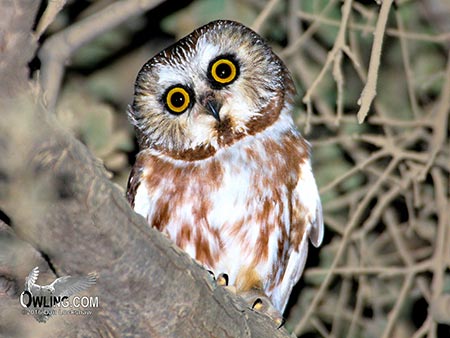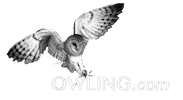
Northern Saw-whet Owl
A Reference for North and Central American Owls
The Northern Saw-whet Owl is said to be quite tame and approachable in the daytime (this is certainly not true at night). If found in the daylight it may be perched as low as 5 feet off the ground. Despite being one of the the most common owls in North America in general it is very secretive in its nature and can be exceptionally difficult to see. Northern Saw-whet Owl is a small owl but full of attitude. Here you will find photos, recordings and a brief field notes section to help identify and enjoy this beautiful little owl.
A more in depth write up can be found in its natural history page.
To jump immediately to any of these sections use the Page Tabs below.
The primary advertisement song. This is the major (male) vocalization.
There are no videos at this time. Please check back with us.
FIELD NOTES
Northern Saw-whet Owl – Aegolius acadicus
The Northern Saw-whet Owl along with the Boreal Owl are the North American representatives of the genus Aegolius. The two owls are similar in appearance although the Northern Saw-whet Owl is smaller, has a reddish brown back, black bill, and chestnut chest streaking in contrast with the Boreal Owl’s generally deep brown color and horn colored bill. The saw-whet’s whitish crown streaking also set it apart from the Boreal Owl’s white crown spotting. The sexes of the saw-whet are visually alike although they can be distinguished by voice. The juvenile Northern Saw-whet Owl is very different in appearance from the adult owl. It is a reddish brown color with a dark brown head and upper chest area, black facial disk with white from the top of the bill to the forehead. This owl lacks ear tufts but has a relatively large head. Its length is 8″ (about the size of a Baltimore or Bullock’s Oriole). This owl species is strictly nocturnal (active at night). Although secretive in behavior it is fairly common in North America and quite vocal through the breeding season.
